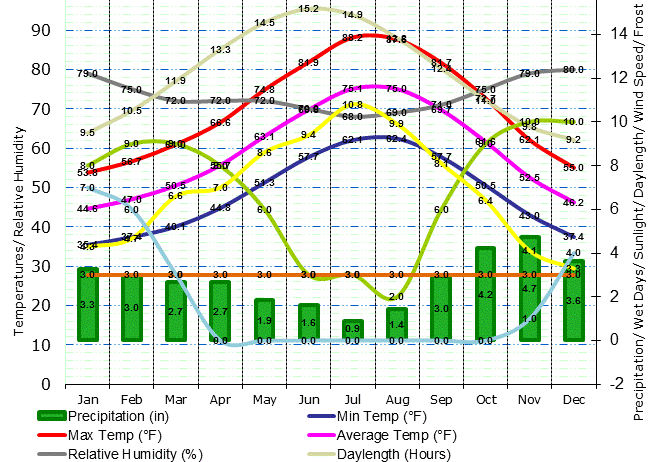When envisioning a trip to Rome, Italy, one might conjure up images of ancient ruins bathed in golden sunlight, vibrant piazzas bustling with life, and, of course, the tantalizing aromas wafting from trattorias. But what is the climate really like in this mesmerizing city? Rome’s weather is emblematic of a Mediterranean climate, characterized by hot, dry summers and mild, wet winters. This particular climatic regime not only influences daily life but also plays a pivotal role in the city’s historical and cultural tapestry.
In summer, from late June to early September, Rome experiences its quintessential Mediterranean sun. Average daily temperatures can soar to around 30°C (86°F), with peaks occasionally reaching upwards of 35°C (95°F). The dry spell, while delightful for sun-seekers, can pose significant challenges, particularly as it relates to water resources. How does a city steeped in history navigate the impediments of drought while catering to both its residents and the throngs of tourists?
The pervasive sunshine throughout the summer months is intoxicating; it invites outdoor activities such as leisurely strolls along the Tiber River or al fresco dining in shadowy trattorias. The sun sets later, casting a warm glow across the cobblestoned streets, making evenings particularly enchanting. However, for those unaccustomed to such heat, the sweltering conditions might lead to heat exhaustion—a condition that underlines the importance of hydration and personal wellness during the summer months.
As autumn descends, temperatures gradually recede, bringing a genteel respite. October and November usher in a time of transition, characterized by a remarkable interplay of mild temperatures averaging around 20°C (68°F) during the day and crisp evenings that signify the approach of winter. During this period, the chance of precipitation begins to increase, as the Mediterranean climate switches gears. The playful question arises: Can one truly appreciate the stunning fall foliage juxtaposed against the ancient edifices when caught unexpectedly in a downpour?
Rainfall during the autumn months is critical, replenishing the aqueducts that have been the lifeblood of Rome for millennia. This natural resource, vital for the historical city, underscores the delicate balance between urban needs and environmental sustainability. While autumn provides a canvas of vibrant colors, it also necessitates preparedness for sudden rainstorms—an important consideration for any traveler keen on experiencing the city’s beauty to its fullest.
Winter in Rome brings with it a different character altogether. From December to February, the climate turns mild and occasionally chilly. Daytime temperatures hover around 10-15°C (50-59°F), making Rome much colder than many expect but still relatively temperate compared to northern European countries. Even more surprising is the propensity for snowy weather, although significant accumulation is a rarity. The winter months are often characterized by increased rainfall, as storm systems from the Atlantic sweep across Italy.
With winter rains, residents experience a revival of greenery, with parks and gardens bursting into life against the backdrop of historical architectural marvels. However, the stormy season raises questions regarding urban infrastructure: How resilient is the city to flooding, especially in vulnerable areas that were not built with modern drainage systems in mind? This challenge highlights the pressing need for sustainable urban planning to accommodate nature’s unpredictable whims.
As spring approaches, the climate gradually shifts once again. March heralds a return to warmer and sunnier days, leading up to the invigorating months of April and May, where daily temperatures can soar to 25°C (77°F) and beyond. The city awakens from its winter slumber, and the blooming flora transforms the landscapes, blending natural beauty with historical landmarks in an alluring spectacle.
Spring rains may still occur, often providing necessary hydration for burgeoning plant life. However, these showers are usually short-lived and interspersed with beautiful sunny days. The interplay of light and color during this season not only enhances the aesthetic appeal of the city but also encourages outdoor festivals and activities. With such vibrant energy in the air, a question arises: are tourists and locals alike making the most of these fleeting moments of spring delight?
Rome’s climate, with its predominantly Mediterranean attributes, beckons residents and visitors alike to engage with nature and history in a multitude of ways. The seasons, each distinct and enriching, serve as a reminder of the intricate relationship between human activity and environmental dynamics. How we respond to the whims of climate change—whether through mindful tourism, sustainability initiatives, or innovative urban planning—will greatly influence the future of this timeless city.
Ultimately, Rome’s delightful contradictions—of blazing suns and sudden showers, of ancient architecture framed by the vibrancy of seasonal colors—pose not merely an invitation to explore but also a challenge to steward its beauty for generations to come. Whether basking under the summer sun or savoring the colors of fall, each moment spent in this historic city is intertwined with the climate that shapes it. In understanding and appreciating this delicate balance, one can foster a deeper connection with not only Rome but the broader tapestry of our planet’s diverse climates.








